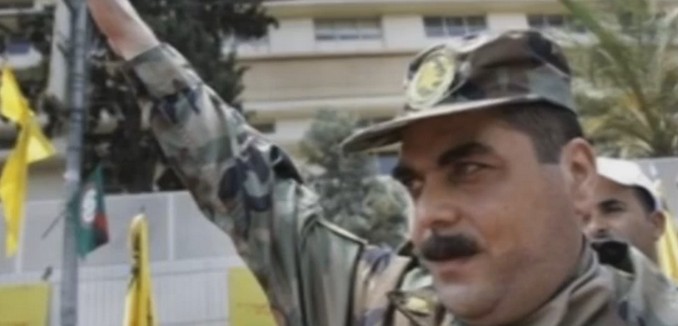Samir Kuntar, the notorious Hezbollah terrorist who was killed in an airstrike on Saturday night, was preparing forces in the Syrian Golan Heights to orchestrate attacks against Israel before his death, former Israeli national security advisor Gen. Yaacov Amidror said during a press call hosted by The Israel Project on Sunday.
While Amidror did not indicate whether the Israeli Air Force was responsible for the strike that killed Kuntar, he noted that the terrorist’s death was “good news” for Jerusalem, and added that “many people in Syria have their own reason to kill these guys who are helping Assad.”
According to Amidror, Kuntar presented an immediate threat due to his efforts to establish a new front against Israel on the Syrian Golan.
Israel declared in the past that when we will need, we will act in Syria against two kinds of targets. One is moving of game-changing weapons systems into hands of Hezbollah. And the other is preparations to attack Israel. Samir Kuntar was a pivot in the efforts of Hezbollah to prepare the next launching pad in the Golan Heights. He was very active in the northern part of the Golan Heights in the Syrian side, was responsible for preparing the area for attacks against Israel, and if he was neutralized by someone it is good news for the state of Israel.
Amidror later emphasized this point while answering a reporter’s question, saying, “Samir Kantar was a pivot in the efforts of Hizbollah to prepare the Golan Heights as the next front against Israel.”
The New York Times cited Amidror’s assessment in its initial coverage of Kuntar’s killing, noting the extent of the terrorist leader’s involvement in expanding Hezbollah’s operations against Israel.
Hezbollah had recently elevated Mr. Kuntar to an important position, leading the group’s operations in southern Syria along the frontier of the Israeli-held part of the Golan Heights.
But its expanded presence on the ground also raised speculation that Hezbollah was trying to secure a new foothold in Syrian territory near the Israeli-held Golan Heights.
Those efforts did not go smoothly, however, and more recently, Mr. Kuntar had a somewhat modified role, setting up a Hezbollah-trained militia in the southern province of Swaida, populated mainly by Syrian Druze.
Amidror also explained that Kuntar’s ethnicity made him uniquely qualified to help Hezbollah recruit fellow Druze.
… he joined Hezbollah and because some of the villages in the north part of the Golan Heights are Druze villages it was easy for Hezbollah to bring in an actor who naturally as a Druze has good relations with these cities … in Syria and he was very, very active and not alone with other members of Hezbollah, commanders from Hezbollah, and was what supposed to do … to prepare the area, the northern part of the Golan Heights for future attacks against Israel.
Avi Issacharoff offered a similar assessment of Kuntar’s role in The Times of Israel on Sunday, writing, “Kuntar, who was Druze, is credited with having salvaged Hezbollah’s terror network on the Syrian Golan Heights.”
In May, Brig.-Gen. (ret.) Dr. Shimon Shapira mentioned Kuntar’s activities in an analysis about an attempted infiltration by Hezbollah against Israel:
… the attempt revealed Hizbullah’s efforts to recruit fighters from Druze villages in the areas controlled by the Syrian army. Hizbullah activities among the Druze are led by Samir Kuntar, who succeeded in recruiting and uniting Druze activists, some residents of Majdal Shams (in the Israeli-controlled Golan), to carry out military acts against Israel.
Thus, Hizbullah is expanding its activities not just geographically within the Golan Heights, but also in the enlistment of Druze fighters into its new “Hizbullah Syria” organization. The original head of the organization was Jihad Mughniyeh, killed in the January air strike and replaced by Samir Kuntar, a Druze.




